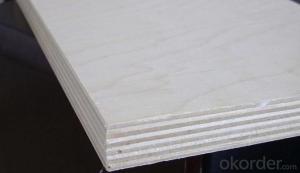When it comes to choosing the right material for your home or office furniture, Plywood and MDF (Medium Density Fiberboard) are two of the most popular options. Both have their own unique characteristics, advantages, and disadvantages. In this article, we’ll dive into the details of each material, compare them side by side, and help you decide which one is the best choice for your specific needs.
The Basics of Plywood and MDF
Plywood is a versatile and durable wood-based panel made from thin layers of wood veneer that are glued together under heat and pressure. Each layer, or ‘ply’, is arranged with its grain running perpendicular to the adjacent layers, which gives plywood its strength and resistance to warping. Plywood is available in a variety of types, including hardwood, softwood, and marine plywood, each with its own set of properties and ideal applications.
MDF, on the other hand, is an engineered wood product made from wood fibers and resin, which are combined under heat and pressure to create a smooth, uniform surface. MDF is known for its affordability, ease of painting, and ability to be cut and shaped easily. However, it is not as strong or moisture-resistant as plywood.
Aesthetic Appeal: Which Looks Better?
When it comes to aesthetics, it’s a matter of personal preference. Some people love the natural look of plywood, with its layers of wood grain visible on the surface. It can be sanded and finished to a high gloss, or left with a more rustic, natural look. Others prefer the smooth, paint-friendly surface of MDF, which allows for a wide range of colors and finishes. If you’re going for a sleek, modern look, MDF might be the better choice. If you want to showcase the natural beauty of wood, plywood is the way to go.
Durability: Which Lasts Longer?
Durability is a key factor to consider when choosing materials for your furniture or cabinetry. Plywood is generally more durable than MDF. It can withstand more weight and is less likely to warp or crack over time. This makes it an excellent choice for heavy-duty applications, such as shelving, tables, and outdoor furniture. MDF, while affordable, can be prone to warping and is not suitable for outdoor use or areas with high humidity.
Ease of Use: Which is Easier to Work With?
If you’re a DIY enthusiast or a professional woodworker, the ease of use of the material can make a big difference. MDF is easier to work with due to its uniform density and smooth surface, making it ideal for cutting, drilling, and routing. It also takes paint and other finishes well, which can be a significant advantage for custom projects. Plywood, while more challenging to work with due to its layered structure, offers more stability and resistance to warping, which can be beneficial for more complex projects.
Cost: Which is More Budget-Friendly?
In terms of cost, MDF is typically more budget-friendly than plywood. It is less expensive to produce and can be a great option for those looking to save money on their projects. However, the lower cost of MDF can sometimes come at the expense of quality and durability. Plywood, while more expensive, offers better value in the long run due to its strength and longevity.
Environmental Impact: Which is Greener?
The environmental impact of the materials you choose can also be an important consideration. Plywood is generally considered more environmentally friendly than MDF, as it uses less resin and fewer chemicals in its production process. MDF, due to its manufacturing process, requires more resins and chemicals, which can have a higher environmental footprint. If sustainability is a priority for you, plywood might be the better choice.
Moisture Resistance: Which Can Handle the Wet Stuff?
Moisture resistance is a crucial factor, especially for projects that will be exposed to water or high humidity. Plywood is more resistant to moisture than MDF, making it suitable for use in bathrooms, kitchens, and other wet areas. MDF, however, is more susceptible to damage from moisture, which can cause it to swell and lose its structural integrity.
Conclusion: Which Board Material is Best for You?
Ultimately, the best board material for your project will depend on your specific needs and preferences. If you’re looking for a durable, long-lasting material that can handle heavy loads and resist moisture, plywood is the way to go. If you’re on a tight budget and need a material that’s easy to work with and paint, MDF might be the better option. Consider the factors discussed in this article, and choose the material that best fits your project’s requirements.
Whether you’re building a piece of furniture, creating cabinetry, or embarking on any other woodworking project, understanding the differences between plywood and MDF will help you make an informed decision. Remember, the right choice will not only affect the quality and longevity of your project but also your overall satisfaction with the end result.

